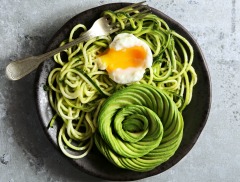Don't just meal plan... meal plan intelligently - with Meal Genius! Sign up for our free newsletter to get delicious recipes, sample meal plans and a whole lot more!
Tamari
Soy sauce - a staple in Asian cooking - is a made by fermenting boiled soybeans and roasted barley or wheat.
While there is essentially one main type of soy sauce produced in the United States, China and Japan produce a number of varieties with a diverse range in color and flavor. Light soy sauce is thinner and saltier than dark soy sauce. Japanese tamari is thick, rich and extremely dark.
Soy sauce is used to flavor soups, sauces, marinades, meat, fish and vegetables, as well as for a table condiment.
Because of the dangers associated with consuming genetically-modified soybeans, opt for organic soy or tamari sauce (wheat and gluten-free) made with non-GMO soybeans.
The Benefits
- Special diets: Diabetic, Gluten-Free Diet, Gluten-Free/Dairy-Free Diet, Grain-Free Diet, High Protein Diet, Low Acid Diet, Low Carb Diet, Low FODMAP Diet, Low Oxalate Diet, PCOS Diet, Pescetarian Diet, Vegetarian Diet
- Excellent Source of:
- Good Source of:
- Preferences: No Fish, No Red Meat, No Pork, No Eggs, No Shellfish, No Gluten, No Nuts, No Seeds, No Corn, No Dairy, No Poultry, No Coconut, No Pseudograins, No Yeast, No Peanuts, No Citrus, No Nightshade, No Grains, Low Carbohydrate, Low Cholesterol, Low Fat, Low Sugars, Low Saturated Fat
Selecting and Storing
Store soy sauce in a cool, dark place.









